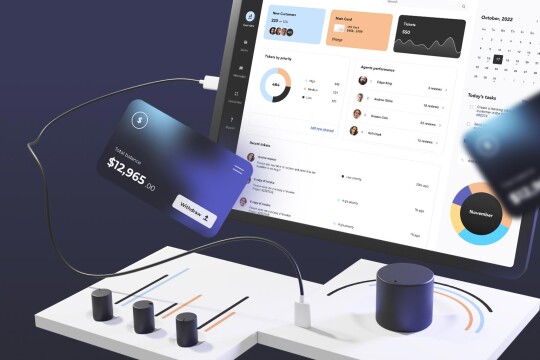Investments are always associated with risks; however, there’s a sure way to minimise the chances of going wrong. While you might not be 100% sure how the market will accept the product, you can take a more detailed look at the company you’re investing in. Here’s where technical due diligence comes into play, providing investors with extra peace of mind and helping them make more informed decisions.
What is technical due diligence?
Technical due diligence refers to auditing a company from a technology perspective, including its products, technical infrastructure and architecture, product roadmap, software development practices, processes, and IT staff. Technical due diligence is vital for potential buyers or investors: it provides an independent view of a tech company’s value, growth potential, and possible risks, significantly feeding into a more informed decision-making process.
When is TDD carried out?
Technical due diligence process takes place before M&A (merger and acquisition) or getting an investment. Investors are especially interested in conducting tech due diligence since it allows them to identify potential risks and take action toward minimising them.
Why carry out technical due diligence?
No one likes making shots in the dark, so conducting technical due diligence is a wise solution to ensure that you are investing in a reliable company. Beyond that, by carrying out tech due diligence, you’ll be able to:
- estimate the target company’s professional competence
- understand the product’s value
- assess potential security risks
- explore the technical side of the product
- test workload
- evaluate the product’s payback
What are the stages of technical due diligence?
As soon as investors and business partners have signed a letter of intent, it’s time to plan the technical due diligence process, which involves seven major stages.
1. Preparation
The initial stage of technical due diligence is focused on planning, scoping and defining the goals and boundaries of the due diligence process. This involves pinpointing the key areas of focus, such as technology infrastructure, software systems, intellectual property, data security, technical team, etc., as well as determining the timeline and resources required for the tech due diligence.
The preparation stage is crucial as it lays the groundwork for the subsequent phases of the process.
2. Kick-off call
This stage of the technical diligence process is devoted to an in-depth analysis of the product’s market potential and planning further due diligence steps. At the kick-off meeting, the parties define the requirements and plan the technical due diligence process in more detail. Also, this meeting helps ensure that every party is on the same page regarding the product’s vision, value proposition, and market prospects.
3. Code review
As its name suggests, this stage of the tech diligence process involves reviewing the code written by the target’s development team. This is usually done by the senior software developer or a third-party vendor specialising in technical due diligence. Code review encompasses checking for errors and inaccuracies in the code as well as examining the general coding style. In essence, code review is a way to prove to the investors that the product is technically viable.
4. Documentation screening
Technical due diligence also involves examining the target company’s technical documentation. The party carrying out technical due diligence thoroughly checks all existing documentation, including that of the product architecture, integrations and tech solutions, backup and recovery, servers, etc.
5. Team meeting and interviews
A meeting with the software development team is one of the most important stages of tech due diligence. It’s aimed at taking a more detailed look at the target company’s people & processes, evaluating team expertise, the internal roles and processes for development, quality assurance, deployment, operations and support.
6. Report
The tech due diligence’s final phase suggests summarising the findings in a detailed report covering the results of code review, documentation screening, and team interviews. The report describes the strengths, weaknesses, opportunities and risks associated with the product, as well as states whether the product is technically viable and whether the company has the capability to deliver on the promises made.
The main goal of the final tech due diligence report is to provide recommendations and insights to the acquiring or investing party to support their decision-making process.
7. Discussion
The previous stages typically bring a lot of questions. It’s essential to schedule a meeting to discuss the tech due diligence results and provide investors with answers to additional questions.
It’s important to note that this is a general framework, and the specific stages and depth of analysis may vary based on the nature of the transaction and the parties involved. Additionally, engaging subject matter experts or external consultants with expertise in specific areas may enhance the effectiveness of the technical due diligence process.
Technical due diligence scope
Now, let’s explore technical due diligence from a different angle, taking a more detailed look at its scope. At its core, tech due diligence is an audit performed to analyse a software company’s capabilities and risks that investors can face. Given that, there are several vital aspects subject to tech due diligence:
Architecture and infrastructure
One of the essential parts of the technical due diligence process involves examining the target company’s IT infrastructure and architecture to help potential investors estimate their effectiveness. The technological due diligence experts look into the software systems as well as check documentation related to them, including that for cloud platforms, web servers, data centers, etc.
In addition, the party performing due diligence can interview the target company’s key employees about the logic behind their decisions on their IT infrastructure.
Code quality
Code quality is crucial for the success of any product, and nobody wants to invest in poorly written code and end up spending additional costs on fixing issues. That’s why software due diligence involves thorough code review, including code quality, programming languages, open-source components, third-party software dependencies, etc.
Technology roadmap
Another critical aspect on the technical due diligence checklist is examining the company’s technology roadmap. The technology roadmap reflects how accurately the target company’s technology aligns with its product or service initiative. The due diligence experts are interested in the company’s technology stack and product’s scalability in the first place.
People
Of course, investors want to know about their potential investee’s organisational structure and internal processes, making the target company’s staff subject to examination. The latter typically involves scrutinising the company’s organisational chart, i. e., departments, in-house team members and their roles, outsourcing services used, etc. Also, special attention is focused on employee training and educating them on the company’s values and internal policies.
Product development workflow
The technology due diligence team also studies how the operational processes are organised, including iterations, quality assurance, deployment, etc.
Security
Security checks are imperative to ensure that the target company’s products are shielded against malware attacks and other security risks that can cause malfunctions and data breaches. The party responsible for carrying out technical due diligence assesses backend authentication processes, security mechanisms, and compliance with data privacy standards.
Intellectual property
While the intellectual property review is typically performed as part of legal due diligence, legal due diligence and tech due diligence are closely interrelated processes in this respect. Fair enough, since investors will want to be sure that the assets are adequately protected. The tech due diligence experts review the target organisation’s intellectual property portfolio — copyrights, domain names, trademarks, patents, trade secrets, know-how, etc.
Final words
As investors are mostly non-technical, tech due diligence is the best way to understand a product’s real value, predict its growth potential, and assess potential risks.
Technical due diligence conducted by an independent tech team can ensure that you invest in a reliable company. A comprehensive scan of the product’s technical condition, code quality, and the target’s approach to decision-making helps you make informed decisions and protect your investments.
And if you’re a startup, it’s not the best idea to go all out writing good code and polishing your product just for the sake of due diligence – it’s essential to set up proper processes, architecture and development approach from the very beginning – this will ensure that you successfully pass the tech due diligence at any point.







